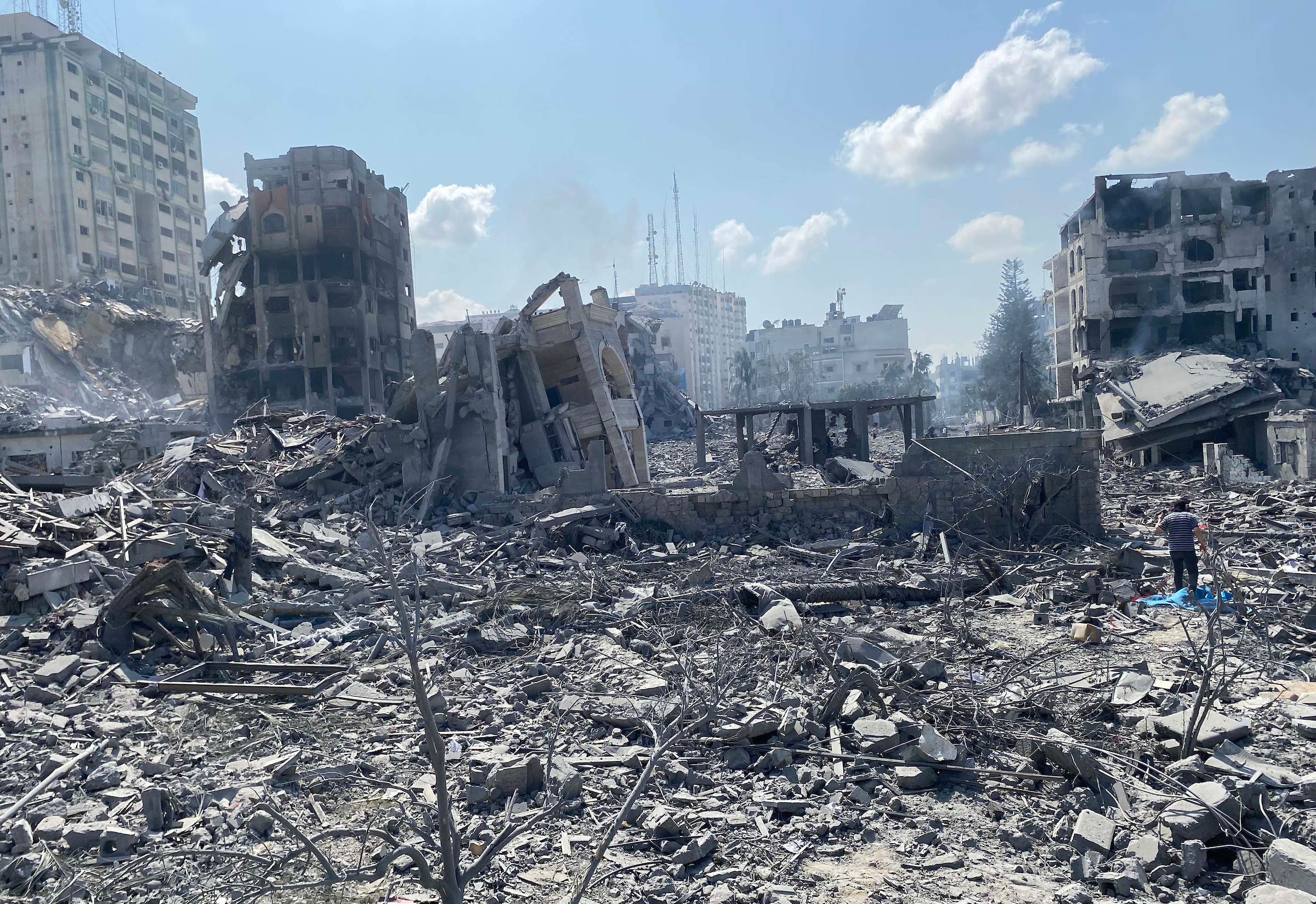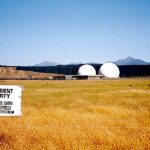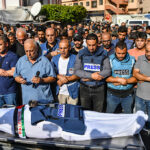The 7 October Hamas attacks on Israel, a sophisticated and brutal display of violent resistance, is transforming the Middle East. Israeli and American intelligence failed spectacularly, leaving Israelis exposed to waves of Hamas militants slaughtering men, women and children. Over 1400 Israelis were reportedly murdered.
Predictably, Israel responded with a devastating air and ground campaign in Gaza, wholly backed by the entire Western world, killing at least 10,000 Palestinian civilians so far, and laying waste to vast parts of the besieged territory. Germany and the US have surged weapons to the Jewish state in support of its stated mission.
Friends of mine in Gaza, the ones I’m able to reach due to the lack of reliable communication, recount becoming refugees in their own land, homes destroyed, a lack of food and water and a collapsed health-care system.
Australia has played its part, strongly backing the Israeli war on Gaza and refusing to call for a comprehensive ceasefire.
Both Prime Minister Anthony Albanese and Foreign Minister Penny Wong are fully aware that a key US base near Alice Springs, Pine Gap, is giving timely intelligence to the Israelis in its targeting of Hamas, as reported exclusively by Declassified Australia last week in a story that went global and viral. However, either the accuracy of the intelligence is questionable, or it is being ignored, considering the massive loss of Palestinian civilian life in Gaza.
Canberra also plays a less discussed role in the current conflict by sending large amounts of defence equipment to Israel in the last years, the exact details of which are shrouded in secrecy.
Three Palestinian human rights group along with the Australian Centre for International Justice (ACIJ) have launched legal action in the Federal Court of Australia to uncover the permits issued by Australia’s Minister for Defence, Richard Marles, allowing the export of weapons to Israel since 7 October 2023.
What’s been largely missing from the media coverage in the last month is a wider understanding of Gaza before the 7 October attacks. What was the Israeli strategy of suffocating the 2.3 million Palestinian citizens for years? How does the Israeli Defence Forces weaponise social media in its conflict with the Palestinians?
I’ve spent years investigating these issues, regularly visiting Israel and Palestine since 2005 and being based in East Jerusalem between 2016 and 2020, and my conclusions are grim; for too many Israeli Jews and the Western world that blindly supports the Jewish state, Palestinians are an inconvenience that need to be imprisoned, humiliated, occupied or killed.
The following is a timely, edited extract from my book, The Palestine Laboratory, which is a short-list finalist in this year’s book award at the Walkleys, Australia’s leading journalism prize. It was released in May this year.
BOOK EXTRACT
The most effective example of separatism is the encirclement of Gaza, trapping more than 2 million Palestinians behind high fences, under constant drone surveillance, infrequent missile attack, and largely closed borders enforced by Israel and Egypt.
When Israel completed the sixty-five-kilometre high-tech barrier along the entire border with Gaza in late 2021, at a cost of US$1.11 billion, a ceremony in southern Israel took place to mark the occasion. Haaretz described the wall as “a complex engineering and technological system: the only one of its kind in the world” that required construction assistance from Europe.
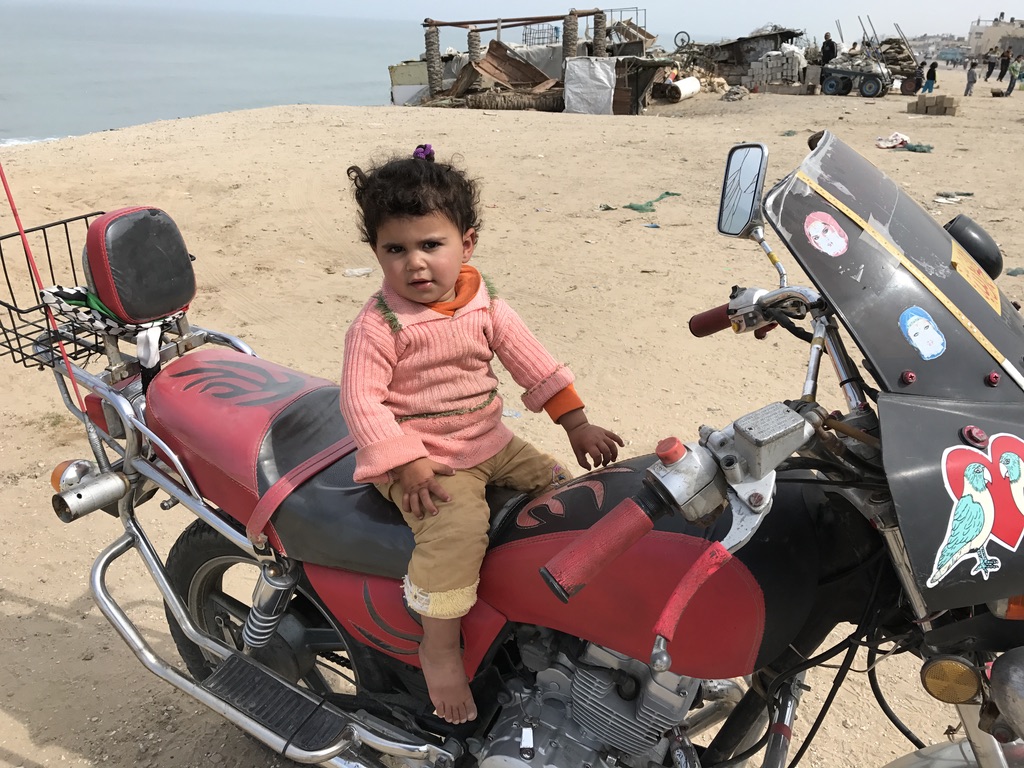
Back in 2002, three years before Israeli Prime Minister Ariel Sharon withdrew nine thousand Jewish settlers from Gaza, Israeli historian Van Creveld predicted the vision: “[The only solution is] building a wall between us and the other side, so tall that even the birds cannot fly over it…so as to avoid any kind of friction for a long, long time in the future…We could formally finish the problem, at least in Gaza, in forty-eight hours, by getting out and building a proper wall. And then of course, if anybody tries to climb over the wall, we kill him.”
Gaza is now the perfect laboratory for Israeli ingenuity in domination. It is the ultimate ethnonationalist dream, keeping Palestinians indefinitely imprisoned.
The barrier around the territory was first built in 1994 and has undergone a range of upgrades since (though it was destroyed by Palestinians in 2001). Today its population has been placed in a forced experiment of control where the latest technology and techniques are tested.
However, what is happening in Gaza is increasingly occurring globally. The Palestinian architect Yara Sharif said that“the Palestinianization of cities is happening worldwide. It’s happening by destruction and erasure, but also with dramatic climate change.”
The November 2012 Israeli bombardment of Gaza, called ‘Operation Pillar of Defence’, was a seven-day war that killed 174 Palestinians and 6 Israelis and injured thousands more. While the death toll in that operation was relatively low, Israel’s ‘Operation Cast Lead’ in 2008 and early 2009 saw the death of 1,400 Gazans. That conflict saw a revolution in how the IDF portrayed the war across its multiple social media platforms.
Worried that public opinion in some Western nations was turning against Israeli military actions, the so-called “instawar” was a coordinated enterprise to live-tweet military operations and infographics, produced to proudly announce the killing of Hamas members or the arrest of Palestinian “terrorists”. These productions sometimes had the feel of a Hollywood-style, big-budget action film.
WAR AS SOCIAL MEDIA SPECTACLE
The Israeli social media strategy aimed to involve both domestic and global supporters of its military missions. By doing so, and asking backers to post their own supporting tweets, Facebook posts, or Instagram images, the IDF created a collective mission that other nations could easily mimic by stirring up nationalist fervour online.
During Operation Pillar of Defence, the IDF encouraged supporters of Israel to both proudly share when “terrorists” were killed while at the same time reminding a global audience that the Jewish state was a victim. It was a form of mass conscription to the cause through the weaponization of social media.
This was war as spectacle, and the IDF was spending big to make it happen. The IDF media budget allowed at least 70 officers and 2,000 soldiers to design, process, and disseminate official Israeli propaganda, and almost every social media platform was flooded with IDF content.
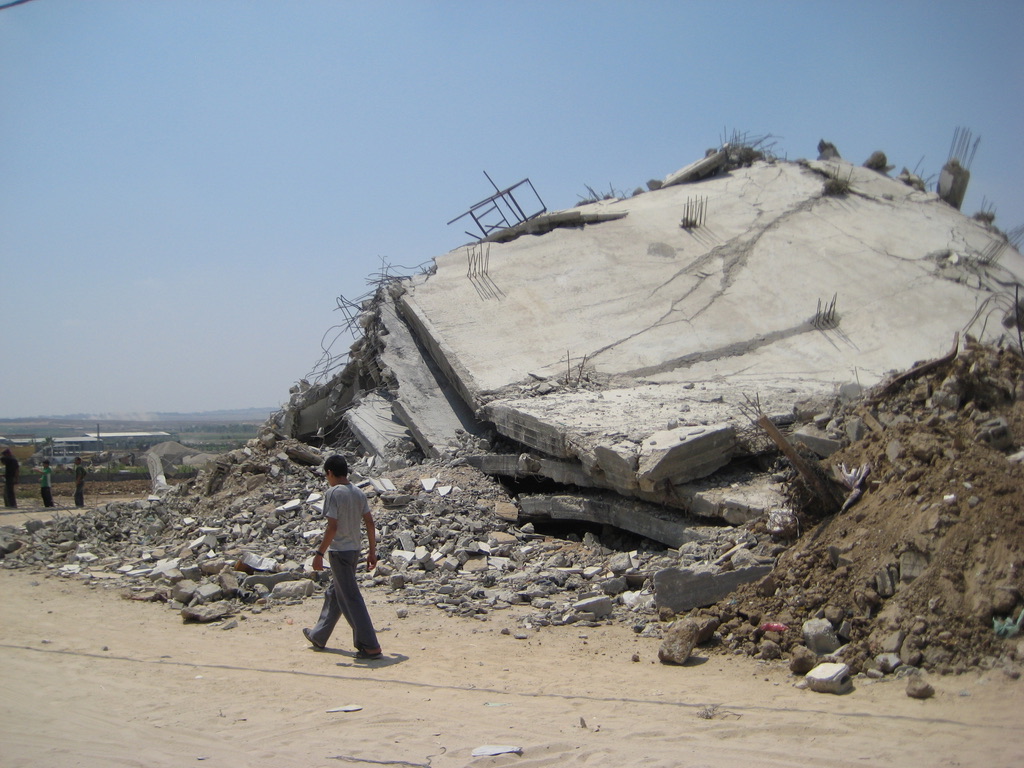
The unstated goal of the IDF information strategy is weaponizing Jewish trauma in the service of perpetuating occupation. Through countless posts and memes, the IDF believes that highlighting the sacrifices made by Israel in its never-ending battles with the Palestinians is a winning way.
In this logic, Palestinians have no right to be angry about their plight and their trauma is non-existent. Resisting the occupation is thus rendered illegitimate. This messaging ideology appeals to other nations, most of whom cannot match Israel in speed and sophistication, in their own wars with insurgents or domestic opponents. The tactic is always the same: a negative response to a badly received tweet or Facebook post is simply more posts and tweets, aiming to flood the internet with so much noise that the previous posts are quickly forgotten.
A comprehensive 2021 study of Operation Protective Edge’s social media campaign by Marisa Tramontano, a sociologist at John Jay College of Criminal Justice, found that the IDF used a multitude of visual and written tools to justify its actions in Gaza and the West Bank.
“Israel establishes itself, in part through its unmediated social media discourse, as part of the Islamophobic hegemonic coalition that positions Israel as the eastern-most front of the United States’ ‘global war on terrorism,’” Tramontano wrote.
There was hope at the birth of the digital revolution that being able to film and disseminate photos and videos of Israeli abuses in Palestine might help the Palestinian cause. There is no doubt that global awareness of the occupation has soared, and that this has been partly assisted by the raw, unedited vision of Palestinians interacting with settlers or the Israeli army.
Yet there is also a large body of evidence that hard, visual imagery has been co-opted by the Israeli state to deny the reality of what Palestinians say they are experiencing. The Israelis claim that Palestinians are lying about their circumstances despite what we’re all seeing. Being able to see Israeli atrocities against Palestinians doesn’t work with people who do not view Palestinians as human beings, a racial group who deserve punishment and death. As the Israeli population has moved to the right, moral discomfort is rare.
Israel’s social media warriors know that connecting its mission to Washington’s post-9/11 struggles is vital to eliciting sympathy and support. “The so-called threat of Palestinian terror constitutes a key component of Israeli trauma narratives—a quotidian threat layered on top of multigenerational trauma over exile and genocide,” Tramontano argued:
“More concretely, Israel’s actions are presented as moral and legal, and the state’s current plight is explained in light of Israel’s tragic past. Images of New York City burning then directly connect Israel’s military operations to the American military response to the “trauma” of 9/11. Conversely, Hamas is cast as a barbarous and irrational enemy with no legitimate claims to trauma, much like narrations about al Qaeda, the self-declared Islamic State, and the like.”
BATTLE-TESTING NEW WEAPONS ON PALESTINIANS
The IDF introduced new weapons and paraded them in front of different defence media outlets during the 2014 Gaza war. The technology was profiled, though advertised would be a more accurate term, in Israeli and international media and included bombs, tank shells, and the Elbit Hermes drone. A few weeks after the war ended, the annual Israel Unmanned Systems conference, an event hosted with the US Embassy in Tel Aviv to prospective markets in Asia, Europe, and North and South America, featured some of the weapons used in the Gaza conflict, including the Elbit drone.
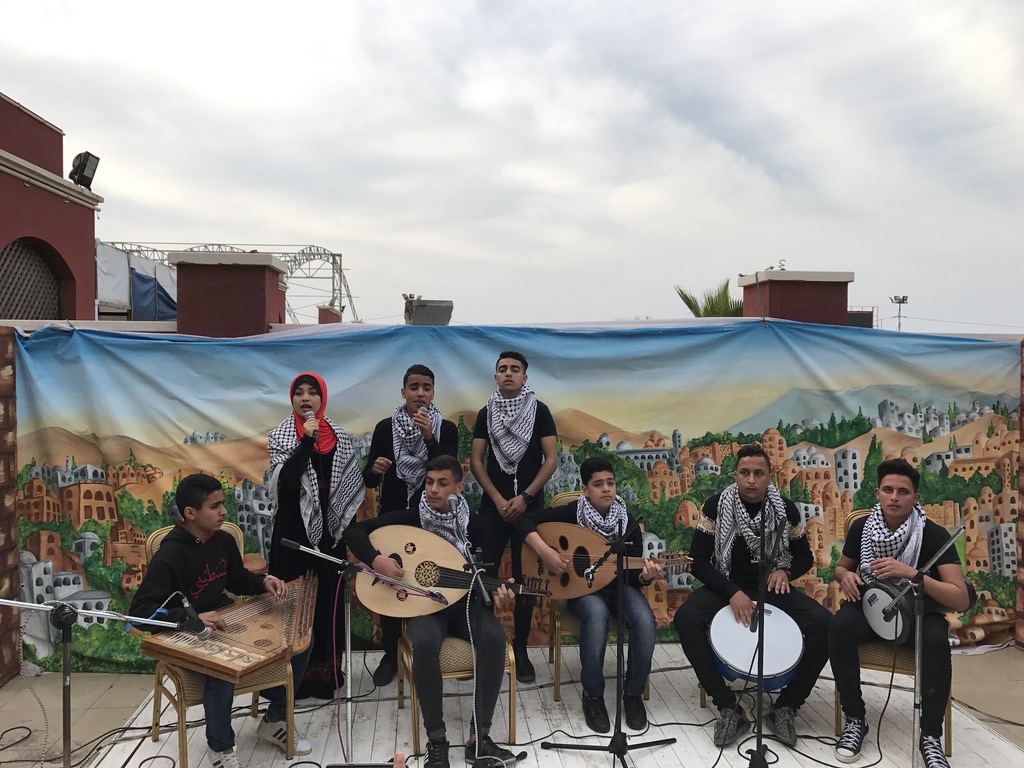
The next Israeli experiment was tested in real time during the Great March of Return, when Gazans protested alongside the fence with Israel. Starting in March 2018, it gained massive global attention as Palestinians peacefully demanded an end to the siege on Gaza and the right to return to lands stolen by Israel.
Between March 2018 and December 2019, 223 Palestinians were killed, most of whom were civilians, and eight thousand were shot by snipers, some left with life-changing injuries. The IDF tweeted (but then deleted) on March 31: “Yesterday we saw 30,000 people; we arrived prepared and with precise reinforcements. Nothing was carried out uncontrolled; everything was accurate and measured, and we know where every bullet landed.”
Israel was so confident in its actions, without fear of the International Criminal Court or any domestic sanction, that Brigadier-General (Reserve) Zvika Fogel gave an interview on Israeli radio in April 2018. Fogel was a former chief of staff at Israel’s Southern Command, which included Gaza.
After Israeli snipers caused the death and injury of thousands of Palestinians, including children, radio host Ron Nesiel questioned Fogel and asked if the IDF should “rethink its use of snipers.” Fogel said the use of snipers was appropriate: “If this child or anyone else gets close to the fence in order to hide an explosive device or check if there are any dead zones there or to cut the fence so someone could infiltrate the territory of the State of Israel to kill us …”
“Then his punishment is death?” Nesiel asked.
“His punishment is death,” the general argued.
“As far as I’m concerned then yes, if you can only shoot him to stop him, in the leg or arm—great. But if it’s more than that then, yes, you want to check with me whose blood is thicker, ours or theirs.”
—
Before you go…
If you appreciate Declassified Australia’s investigations, remember that this all costs both time and money. Join over 5,000 followers and get our Newsletter for updates. And we’d really appreciate if you could subscribe to Declassified Australia to support our ongoing work. Thank you.
